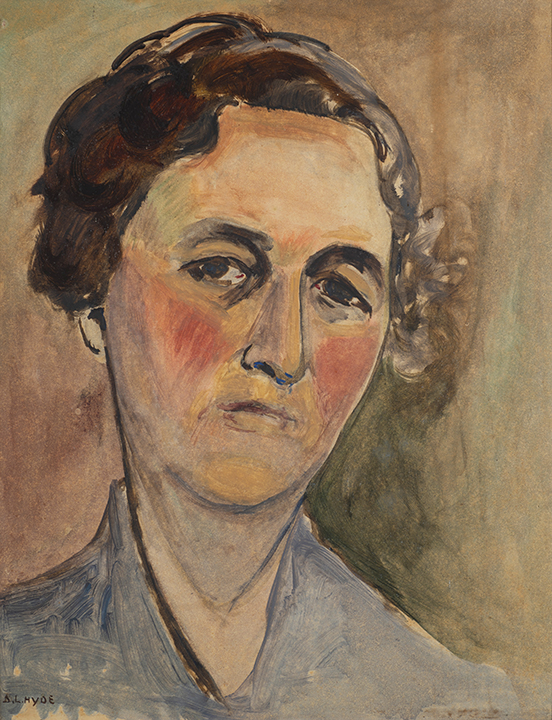
18 Oct TIO Pacific Northwest: “Structure & Form: The Art of B. L. Hyde,” Cascadia Art Museum!
A ground-breaking exhibition is now on display at the Cascadia Art Museum in Edmonds, Washington. Curated by art historian David Martin, “Structure & Form: The Art of B. L. Hyde” is up through February 2, 2025.
Martin’s beautifully penned catalog about Hyde’s life and work is a must for supporters of the museum and for the art-curious in general. The text opens the door to a less-explored, arguably singular chapter in American art history. Purchase a copy here.
Go here to take a virtual tour of the show.
Please scroll down to watch an illuminating video featuring Hyde’s oldest grandchild and art historian Pamela Hyde Smith and David Martin talk about the artist’s life and work.
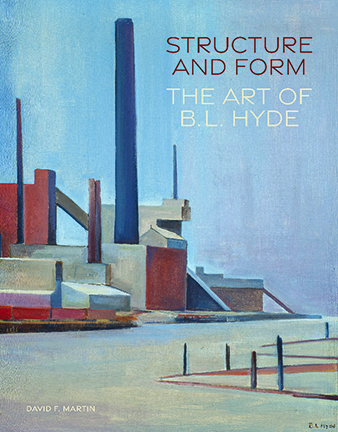
In this context, a meme applies.
One in particular.
Lime green is still having a moment and why? Thanks go to a 32-year-old singer. On September 23 a clue in a New York Times crossword puzzle read: “2024 Charli XCX album with a lime green cover.” And from then on,“brats” started popping up everywhere in the media.
The zeitgeist defines “brats” as strong-headed, disobedient women, who march to their own drums. Brats are confidently rebellious, unapologetically bold, and playfully defiant – like Beulah Loomis Hyde, arguably a forerunner of the “brats” of today.
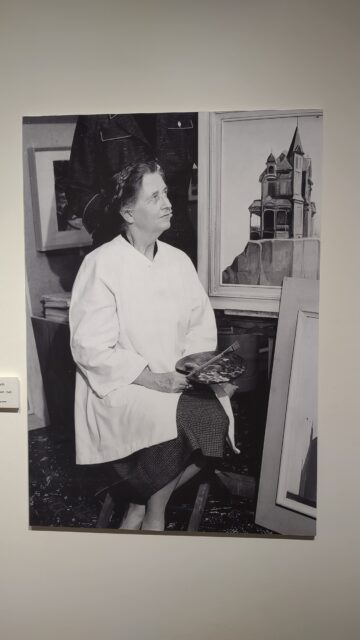
Pioneering artist Beulah Loomis Hyde, courtesy David Thorbeck.
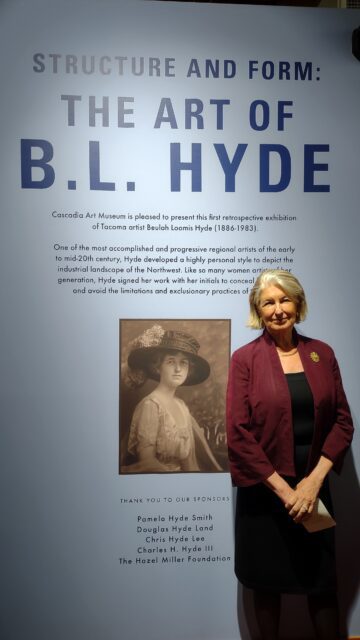
B.L. Hyde’s granddaughter and career dipliomat Pamela Hyde Smith at the opening of the show she orchestrated on 10/8/24. Courtesy Thorbeck.
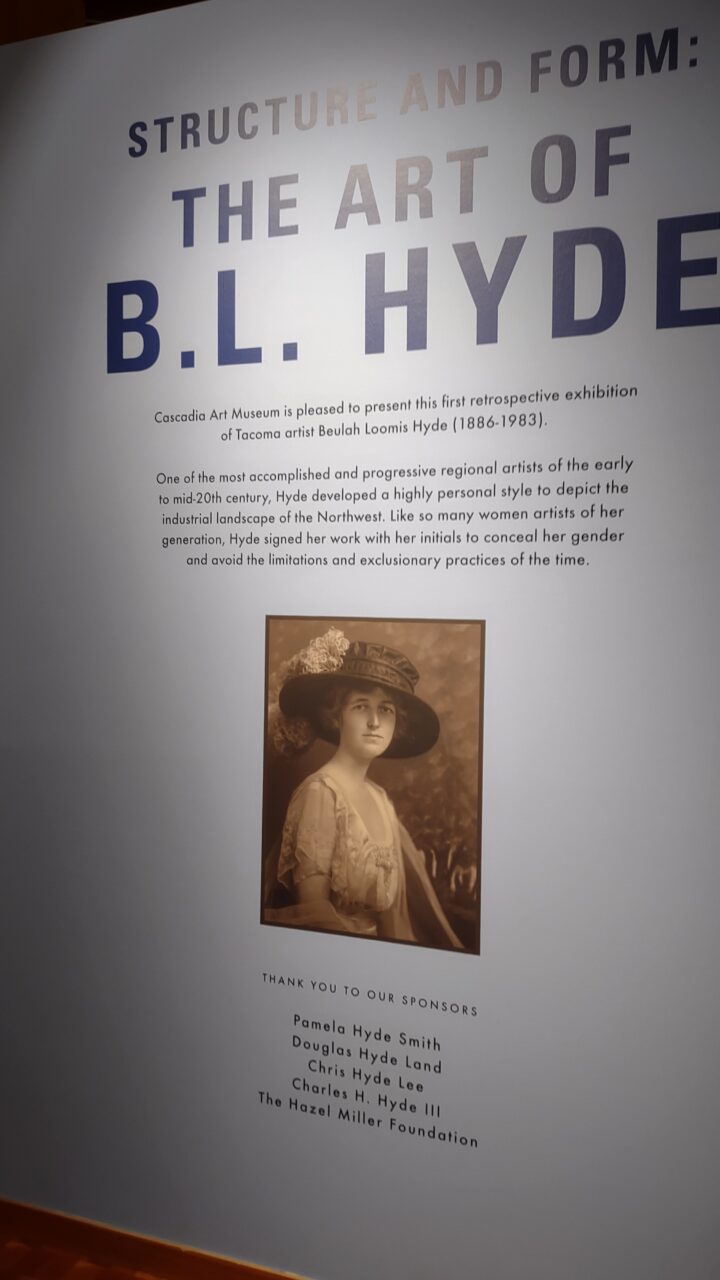
At entry of Hyde’s show, courtesy Thorbeck.
Hyde is also the raison d’être for a long-overdue solo show now on display at the jewel-box of an artistic venue, the Cascadia Art Museum in Edmonds, Washington. Curated by the venue’s muse, art historian David Martin, “Structure and Form: The Art of B. L. Hyde” is up through February 2, 2025.
Hyde was “bratty” in her ability to challenge norms and express herself freely with no more than a nod to convention. Because convention would have had her and her circle of talented friends barefoot, pregnant and down on the farm. Or a variation on theme that should, by now, be dead on arrival.
Truth is in Hyde’s day the notion of “women artists” was regarded as something of an oxymoron. Artists of the “weaker sex” were thought of as interlopers in aesthetic disciplines and separated by sex in the classroom. Which is why Hyde left her gender a mystery, using only looping initials to sign her art.
The notion of Hyde’s beating and exceeding expectations is best summed up by granddaughter Pamela Hyde Smith, herself a force of nature and central ops in the creation of this landmark exhibition.
“…We in her family revered and loved her, and her influence on us persists today.
We’re proud of her development as an artist, and seeing so many of her paintings together enhances their impact. Her style and subjects were unique, bold, and beautiful. She had a keen intellect.
“I remember fierce Scrabble games, brainy conversations about literature, and perspectives more worldly than from anyone I knew. She had a wonderful spirit of adventure. Who else rode a horse around Mount Rainier at 75; skied until she was 85; and was among the first visitors to post–World War II Moscow, or caught the theater season in London most autumns?
“She inspired us.
“‘Nonnie,’ as we all called her, could be formidable, but she was also warm, good-humored, infinitely tolerant, and delighted by life’s joys. Her large archive of correspondence from her school days on reveals, as our memories do, her devotion to her family and the Pacific Northwest.
“We are especially grateful to curator David F. Martin, the expert and engine behind this exhibition…”
Who now weighs in:
“Hyde lived life on her own terms, despite growing up in a less enlightened time for women. In all the press around her decades-long artistic career, she was always referred to as ‘Mrs. Robert Hyde,’ even after her husband’s death…, adding, “…Although Hyde was considered one of the more accomplished and progressive regional artists in the early to mid-20th century, her work has remained primarily in the collections of her descendants, unavailable to the general public. With the resurgence of interest in and scholarship on the accomplishments of American women artists…the…exhibition introduces and reexamines a major talent whose work transcends the boundaries of gender and regionalism…”
The Cascadia Subduction Zone or CSZ is about 700 miles long and 70–100 miles off Pacific coast. The fault line runs from Northern California to Vancouver Island, Canada. Fact is the CSZ is considered a mega-thrust earthquake zone that has shaped the landscape of the Pacific Northwest and the cultures of its inhabitants. Should it rupture, the seismic event would likely trigger a catastrophic earthquake – as in magnitude 9.0+ – and associated tsunamis.
The Cascadia Art Museum takes its name from the CSZ and is causing minor eruptions of its own, thanks in large part to Martin’s passion for showcasing the work of those who have largely been unsung, regional creatives of all stripes worthy of hosannas. No big surprise since it is Martin, a lauded historian, who has pioneered the study of women artists (and other warehoused subgroups) of the Northwest. His focus: the period 1860-1970 and reassessing and redressing the hierarchy of Northwest art history:
“We believe that the visual art history of the Northwest is a unique expression distinct from other American states. Like the artists who created it, our focus may be regional, but our vision is universal. As a collecting institution, we are dedicated to preserving the legacy of our historic regional art to inspire future generations to study and enjoy…” added Martin.
Cascadia opened for business in 2015 on the ashes of a 1960s-era Safeway supermarket, saved from destruction by its mid-century modern bones and the region’s eco-friendliness, The rescue and rebirth of the venue is thanks in large part to the efforts of the museum’s dedicated board chair and avid collector, Lindsey Echelbarger. B.L. Hyde’s work enhances the extant collection of over 200 works of art across mediums.
So Cascadia has shifted its focus from food to food for thought.
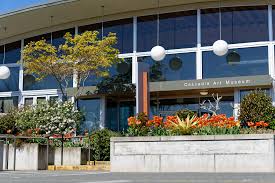
Courtesy, Sketcher Fest Edmonds, WA.
Beyond Martin’s exhaustive, linear study of Hyde’s life, work and major influences– captured in his must-read catalog – what was B.L. Hyde – artist, wife, athlete, intellect and daughter of hardscrabble pioneers – really up to? Urbanscapes, landscapes, portraits and more appear to be about synthesizing her wide-ranging and remarkable experiences and insights. The result? A body of work with a psychological charge beneath beautifully composed surfaces, as below:

Beulah Loomis Hyde (1886–1983). Self-portrait, ca. 1935–40.
Oil on paper.
20 × 15 in.
Collection of Pamela Hyde Smith.
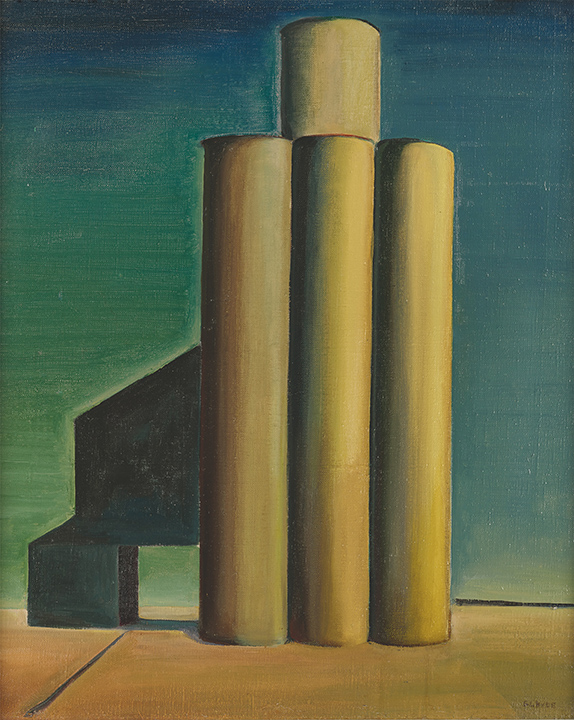
Beulah Loomis Hyde (1886–1983)
Grain Elevators, ca. 1940–47 Oil on canvas
24 × 20 in.Private collection.
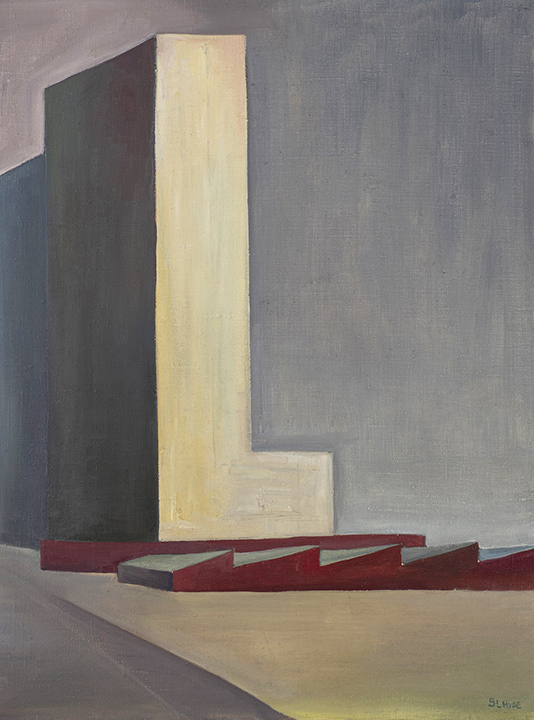
Beulah Loomis Hyde (1886–1983) Untitled, ca. 1949–50 Oil on canvas 24 × 18 in. Collection of Catherine S. Ebert.
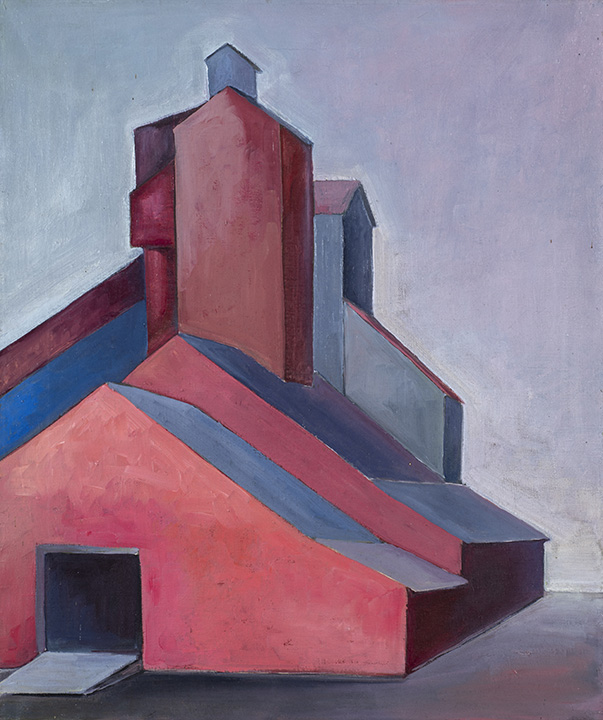
Beulah Loomis Hyde (1886–1983) Untitled, ca. 1945–50. Oil on canvas 241⁄4 × 201⁄4 in. Collection of Pamela Hyde Smith
Summing up the leitmotif of Hyde’s abstracted geometric and generally architectonic shapes, great granddaughter Marian Hyde Smith suggests her ancestor was seeking “the truth” (as in Keat’s “truth is beauty and beauty is truth.”). The observation is underlined in Hyde’s self-portraits – raw, unapologetic, unedited explorations of the architecture of her face.
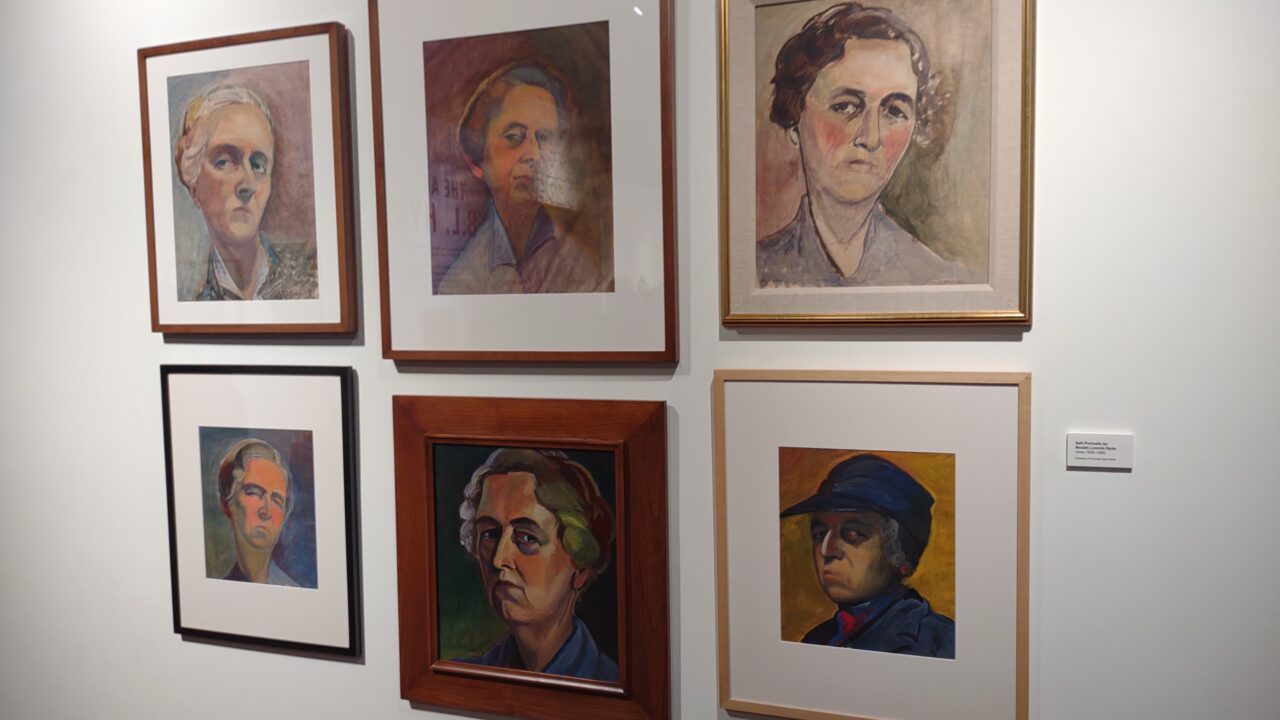
The many faces of B.L. Hyde by B.L. Hyde. No nonsense. No vanity. Only her truth. Courtesy, Thorbeck.
Looking for an “ism” in which to cast Hyde? Best would be Precisionism, an American art movement and variation on the theme of Cubism and, in Hyde’s case, from time to time featuring Fauve’s off-beat color palette.
Precisionist art is characterized by compositions that feature shapes rendered in underlying geometrical structures with clear outlines; minimal detail; and the smooth handling of surfaces in relatively static compositions. Major proponents include Charles Demuth, Georgia O’Keeffe, and Charles Sheeler, the latter two important influences on Hyde. Mark Tobey, Morris Graves, Cezanne, Van Gogh also figure in Hyde’s story, plus a legion of more obscure names, mostly women and minorities, whose art also bled into Hyde’s canvases and who, like the artist, have not yet made the list of recognizable “brands” in the art world.
At least until now.
Perhaps Martin’s Cascadia show of B.L. Hyde’s life’s work will put a thumb on that elusive scale.
At the end of the day, “Structure & Form: The Art of B. L. Hyde” shows a prolific, relatively porous, insightful artist and recorder of regional and personal history. Her (deceptively) simple massing of forms are mostly, not exclusively, minimal, but essential urban shapes. Yet country scenes, including a vignette of raccoons, are charming and without an ounce of treacle.
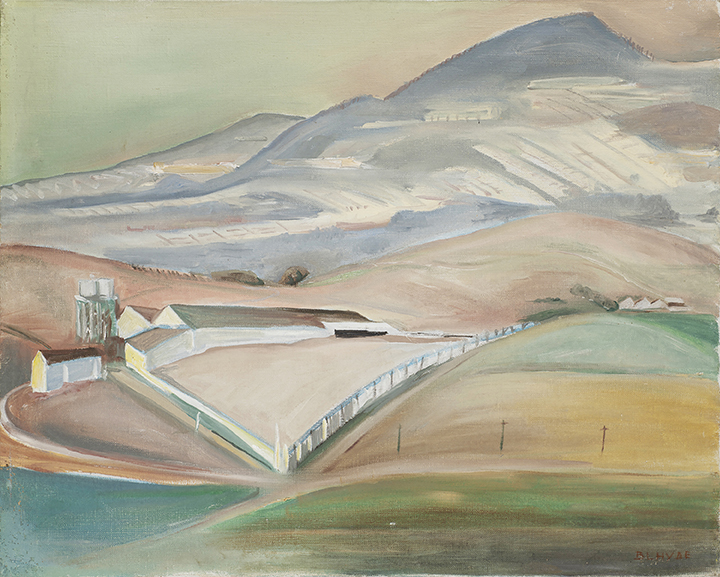
Beulah Loomis Hyde (1886–1983).
Untitled, ca. 1940–45. Oil on canvas. 16 × 20 in.
Collection of Heide Fernandez-Llamazares
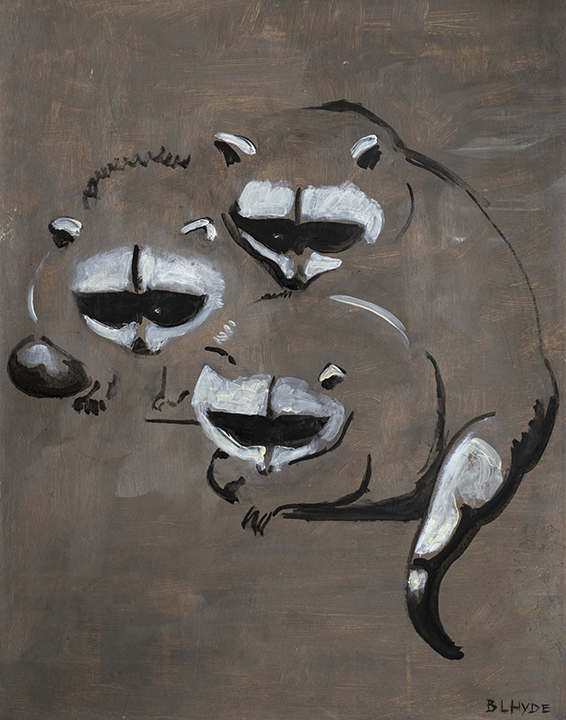
Beulah Loomis Hyde (1886–1983) Raccoons, ca. 1945–50. Oil on paper mounted to Masonite. 20 × 16 in. Collection of Douglas Hyde Land.
Bottom line on B.L. Hyde?
Her art defines the woman as a plainspoken chronicler of her environs and customs of her time and place. A pioneering modernist painter who clearly said things in shapes and colors which she likely felt she could not express as well in any other medium.
In some way shape and form, all artists project themselves into their work. B.L. Hyde displays a quiet elegance and real gravitas.
To miss Cascadia’s latest would be a grave mistake.
David Martin, more:
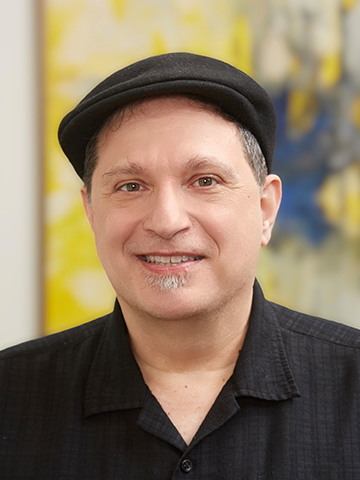
David F. Martin is an arts researcher, writer, curator and historian who has documented the art history of Seattle and the Pacific Northwest since 1986, as well as Western New York State since 1981.
He is the leading authority on early Washington State art and artists. Many of the creatives he has chosen to focus on are women; Japanese and Chinese Americans; gay and lesbian; and other minorities who had established national and international reputations during the period 1890-1960.
Since 2015, Martin has worked as curator for Cascadia Art Museum, Edmonds, Washington.
Martin is former Program Director for the American Art Council at the Seattle Art Museum. For three years he served as regional President of the Northwest Chapter of the National Museum of Women in the Arts, Washington, D.C. He is the author of several award-winning books and catalogues and contributes essays and catalogue entries for national and international publications on painting, printmaking and photography.
Martin is also an Honorary Member of Women Painters of Washington and the only man to have received this honor. He holds an Honorary Doctorate of Fine Arts from Cornish College of the Arts.


Sorry, the comment form is closed at this time.